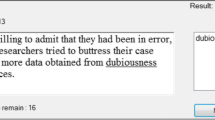Abstract
Scenarios have been used by many engineering disciplines to assist the quality of their professional application to systems throughout a system life-cycle. At early phases of the system life-cycle, Systems and Software Engineers have adopted the Use Case as a means of representing system requirements through the address of user functions. Furthermore, usability engineers also use scenarios as a means of promoting better usability of systems throughout the system life-cycle. Moreover, all practitioners of the mentioned disciplines use some form of requirements capture and trace throughout the system life-cycle. However, in general Human Factors (HF) and Human Factors Integration (HFI) practitioners do not. This paper examines the efficacy of the multi disciplinary use of scenarios to assist the capture of HFI and system requirements. Such an approach benefits the early establishment of requirements and thus supports system life-cycle trace and matching of both physical and cognitive functions.



Similar content being viewed by others
References
Ackoff RL (1989) From data to wisdom. J Appl Syst Anal 16:3–9
Adams MJ, Tenney YJ, Pew RW (1991) SOAR: strategic workload and the cognitive management of advanced multi-task systems, CSERIAC, OH
Alexander IF, Maiden N (2004) Scenarios, stories, use cases through the systems development life-cycle. Wiley, New York
Bartlett FC (1958) Thinking. Basic Books, New York
Boy GA (1997) Active design documents. In: DIS’97 Proceedings—designing interactive systems ACM conference, Amsterdam, NL—19–21 August. ACM Press, New York
Carroll JM (1999) Five reasons for scenario based design. In: Proceedings of the 32nd Hawaii international conference on system sciences, Hawaii
D/JDCC/2/6/1, 19 Feb 03, The Provenance, Authority and Coherence of Concepts, MoD Joint Doctrine and Concepts Centre
DoDAF (Department of Defence Architectural Framework), (2004), Handbook, vol V1. May
Gibson JJ (1979) The ecological approach to visual perception. Houghton-Mifflin, Boston
Gould SJ (2003) The hedgehog, the fox, and the magister’s pox: mending the gap between science and the humanities. Jonathan Cape, London p 5
Hayakawa SI, Hayakawa AR (1990) Language in thought and action, 5th edn. Harcourt Brace Jovanovich College Publishers, Orlando
MacLeod IS, McClumpha (1995) An engineering psychology approach to conceptual design, contemporary ergonomics 1995, Taylor and Francis, London
MacLeod IS (1998) Information and advice: considerations on their forms and differences in future aircraft systems, invited keynote at Capetown global ergonomics conference. In: Scott PA, Bridger RS, Charteris (eds) Global ergonomics. Elsevier, Oxford, pp 667–672
MacLeod IS (2004) HF verification and validation (V&V). In: Harvey R, Sandom C (eds) HF for Engineers, Chap 12. IEE Press, London
MacLeod IS, Hone G, Smith S (2005) Capturing cognitive task activities for decision making and analysis. In: Proceedings of no 10 ICCRTS, Washington, June
Ministry of Defence Architectural Framework (MODAF), http://www.telelogic.com/corp/standards/modaf.cfm
Neisser U (1976) Cognition and reality: principles and implications of cognitive psychology. Appleton-Century-Crofts, New York
Oborne DJ (1987) Ergonomics at work, 2nd edn. Wiley, Bath
Robertson S (2004) Scenarios in requirements discovery. In: Alexander IF, Maiden N (eds) Scenarios, stories, use cases through the systems development life-cycle, Chap 3. Wiley, London
Rolland C, Ben Achour C, Cauvet C, Ralyte J, Sutcliffe A, Maiden NAM, Jarke M, Haumer P, Dubois E, Heymans P (1998) A proposal for a scenario classification framework. Req Eng J 3(1):23–47
Shank R (1995) Tell me a story: narrative and intelligence. Northwestern University Press, Evanston
Volta G (1985) Time and decision. In: Hollnagel E, Mancini G, Woods DD (eds) Intelligent decision support in process environments. Springer, Berlin
Acknowledgment
The part funding of this work as initiated by the Research Director CBD/Human Sciences, under the auspices of the UK Ministry of Defence (MoD) Human Factors Integration (HFI) Defence Technology Centre (DTC).
Author information
Authors and Affiliations
Corresponding author
Additional information
Any views expressed are those of the author(s) and do not necessarily represent those of MOD or any other UK government department.
Rights and permissions
About this article
Cite this article
MacLeod, I.S. Scenario-based requirements capture for human factors integration. Cogn Tech Work 10, 191–198 (2008). https://doi.org/10.1007/s10111-007-0099-3
Received:
Accepted:
Published:
Issue Date:
DOI: https://doi.org/10.1007/s10111-007-0099-3




